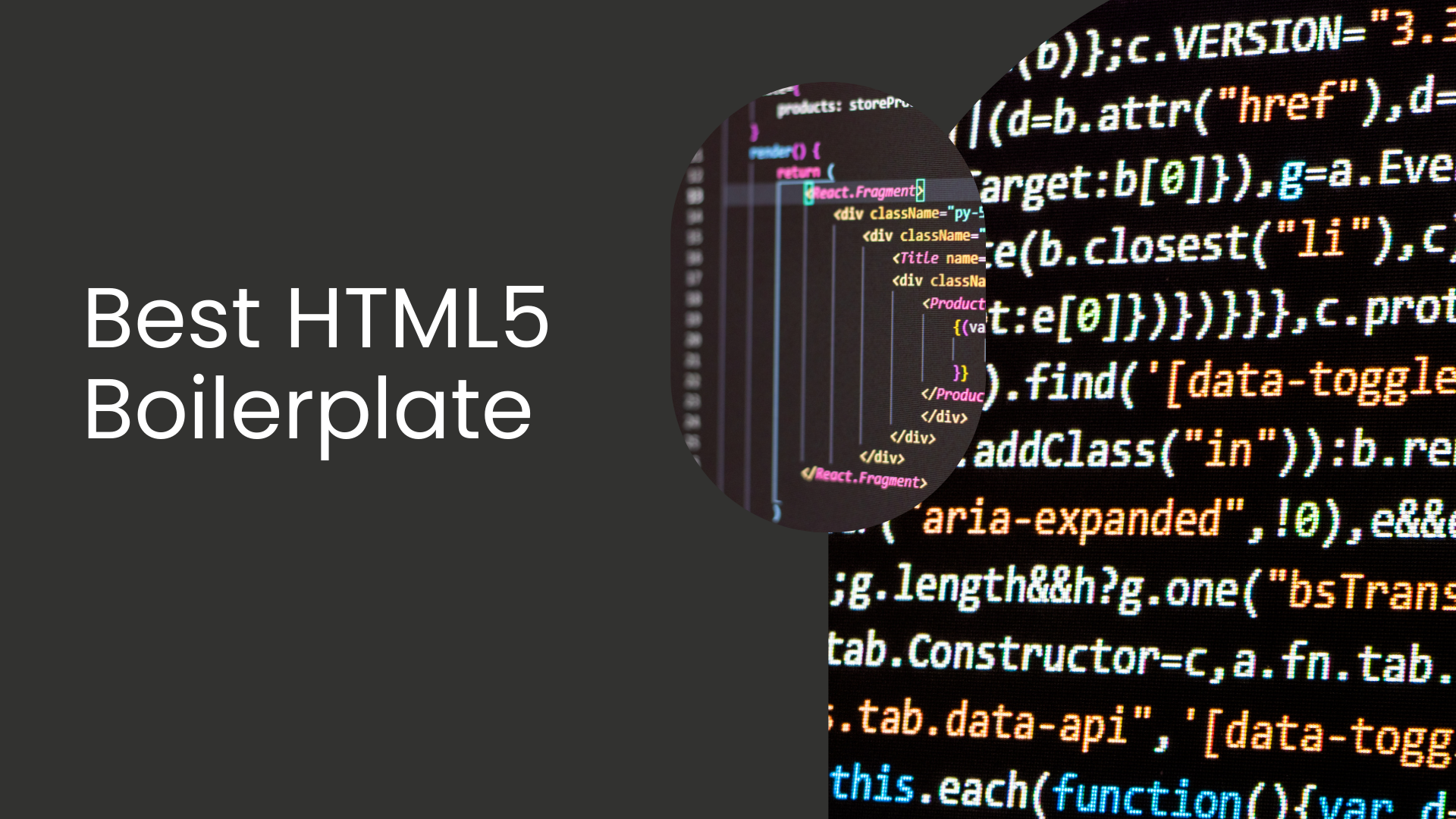Optimizing Web Performance with HTML5 Boilerplate: A Step-by-Step Guide

HTML5 Boilerplate represents a foundational architecture for modern web development, providing an extensively optimized and structured framework for developing high-performance, cross-browser-compatible web applications.
As an open-source initiative pioneered by Paul Irish and Divya Manian, it has evolved into an indispensable tool for front-end developers, offering streamlined configurations for enhanced scalability, security, and efficiency.
This discourse elucidates the fundamental components, inherent advantages, and strategic implementations of HTML5 Boilerplate while critically evaluating its efficacy vis-à-vis alternative frameworks.
Additionally, this article delineates best practices for customization to optimize its utility for complex web applications.
Defining the HTML5 Boilerplate Paradigm
In software engineering, the term "boilerplate" denotes a reusable codebase that expedites project initialization by encapsulating essential structural and functional elements.
Within the web development ecosystem, HTML5 Boilerplate comprises a meticulously curated assortment of HTML, CSS, JavaScript, and server configuration files designed to streamline project deployment and ensure compliance with modern web standards.
Core Attributes of HTML5 Boilerplate
- Cross-Browser Interoperability: Guarantees uniform rendering and behavior across diverse browser environments.
- Performance Optimization Mechanisms: Incorporates advanced caching policies, Gzip compression strategies, and minification scripts.
- Adaptive and Responsive Design Framework: Establishes a mobile-first design ethos for seamless accessibility across devices.
- Integrated SEO and Metadata Enhancement: Embeds essential meta tags to optimize search engine discoverability.
- Developer-Centric Utilities: Supports diagnostic, profiling, and testing methodologies to facilitate robust development.
Architectural Composition of HTML5 Boilerplate
HTML5 Boilerplate comprises an array of pre-configured files and directives that collectively enhance the maintainability and performance of web applications.
1. Structural HTML Configuration
The boilerplate includes a semantically rich and standards-compliant HTML scaffold:
<!DOCTYPE html>
<html lang="en">
<head>
<meta charset="UTF-8">
<meta name="viewport" content="width=device-width, initial-scale=1.0">
<title>HTML5 Boilerplate</title>
</head>
<body>
<h1>Welcome to HTML5 Boilerplate</h1>
</body>
</html>
This construct adheres to HTML5 specifications while ensuring backward compatibility.
2. CSS Normalization and Styling Optimization
The CSS architecture integrates:
Normalize.cssto standardize rendering discrepancies across browsers.- Utility-driven classes, including
.clearfix, to rectify layout inconsistencies. - A foundational typographic and grid system.
Example implementation:
body {
font-family: 'Open Sans', sans-serif;
background-color: #fafafa;
color: #222;
margin: 0;
padding: 20px;
}
3. JavaScript Enhancements
The JavaScript ecosystem within HTML5 Boilerplate encompasses:
- Modernizr for progressive enhancement and feature detection.
- Graceful degradation strategies for CDN-dependent libraries such as jQuery.
- Optimized script loading via asynchronous execution paradigms.
Example of script execution:
document.addEventListener("DOMContentLoaded", () => {
console.log("Boilerplate Initialization Complete");
});
4. Server Configuration and Security Directives
HTML5 Boilerplate incorporates .htaccess directives to optimize server performance:
<IfModule mod_deflate.c>
AddOutputFilterByType DEFLATE text/html text/plain text/xml text/css application/javascript
</IfModule>
This ensures efficient compression, thereby reducing data transfer overhead.
Comparative Assessment: HTML5 Boilerplate vs. Alternative Frameworks
While HTML5 Boilerplate is a pioneering front-end template, several alternatives offer competitive functionalities:
1. Initializr
An extension of HTML5 Boilerplate that provides tailored customization options based on project specifications.
2. Bootstrap
A comprehensive front-end framework integrating pre-styled UI components, contrasting with the minimalist philosophy of HTML5 Boilerplate.
3. Foundation by Zurb
A mobile-first design framework emphasizing adaptive and modular UI components.
4. Skeleton
A lightweight alternative ideal for small-scale projects necessitating a minimal styling footprint.
Strategic Utilization and Customization Guidelines
Implementation Methodology
- Acquisition: Download from official repository.
- Extraction: Deploy within the project directory.
- Modification: Customize according to application-specific requirements.
- Deployment: Integrate additional assets and commence development.
Custom Boilerplate Configuration
For advanced implementations, developers may construct bespoke boilerplate solutions:
<!DOCTYPE html>
<html lang="en">
<head>
<meta charset="UTF-8">
<meta name="viewport" content="width=device-width, initial-scale=1.0">
<title>Custom HTML5 Boilerplate</title>
</head>
<body>
<h1>Optimized Boilerplate Implementation</h1>
</body>
</html>
Additional optimizations may include advanced caching strategies, conditional loading techniques, and integration with contemporary JavaScript frameworks such as React or Vue.js.
Conclusion
HTML5 Boilerplate remains an indispensable tool in the modern web development paradigm, offering a meticulously crafted foundation that enhances performance, security, and maintainability.
Its robust architecture ensures compatibility across diverse browser environments while adhering to industry best practices. For developers seeking a lightweight yet scalable template, HTML5 Boilerplate provides an optimal balance of efficiency and flexibility, serving as a cornerstone for contemporary web applications.
References
- Run DeepSeek Janus-Pro 7B on Mac: A Comprehensive Guide Using ComfyUI
- Run DeepSeek Janus-Pro 7B on Mac: Step-by-Step Guide
- Run DeepSeek Janus-Pro 7B on Windows: A Complete Installation Guide
- Best Website Design using HTML and CSS
- Advanced HTML and CSS Projects for Skill Development
- Best HTML and CSS Projects with Source Code